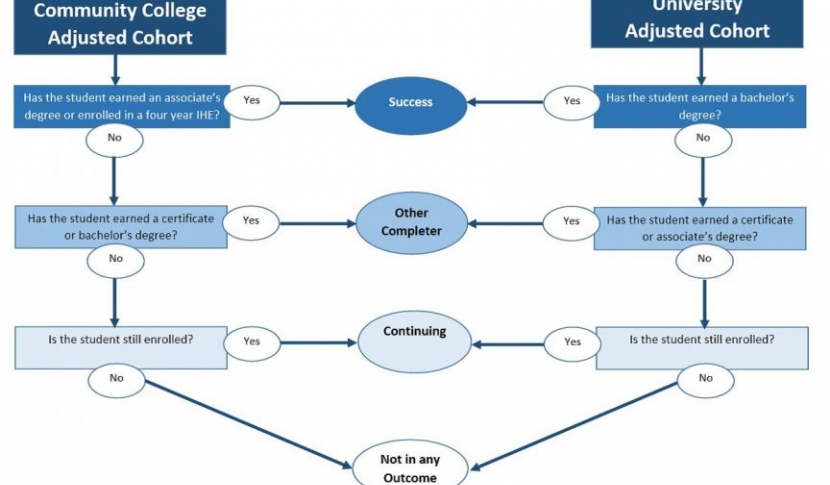The Secret to Student Success: Actually Counting All the Students

The Secret to Student Success: Actually Counting All the Students
Nobody would trade in a working car to a dealer that only wanted to buy the engine, one headlight, and two doors. No utility would let a customer pick and choose which kilowatts of energy they felt like paying for. American politicians don’t get to hold votes in secret and hide their voting records from constituents. So why would anybody think that evaluating universities would work if you don’t count every student who graduates?
As I wrote eight months ago, the State of Michigan’s Center for Educational Performance and Information has dedicated itself to fixing this problem of incomplete information. Last year the Center published the first stab at producing a new graduation rate for the state’s public universities and community colleges, and it has just published rates for the new year. Also published was an update to last year’s data that comes from changing data collection practices to better capture all students.
CEPI’s success rates count part-time students. CEPI’s success rates count transfer students. The federal IPEDS graduation rates do neither. The point is this: 71% of students graduate from Michigan’s 15 public universities with an award in six years or less. IPEDS data suggests that the rate is 61%—an enormous ten percentage points of difference just in the aggregate. And only 53% of all Michigan public university students were even attending full-time! That’s phenomenal. And for what it’s worth, another reason I like the CEPI rates is that they calculate “full-time” according to what students actually need to take to graduate on time, unlike IPEDS. 120 credits for a bachelor’s degree divided by 8 semesters equals 15 credits a semester, the CEPI definition. A student taking 12 credits a semester, the federal definition of full-time, would need 10 semesters to finish a bachelor’s degree – five years. We wonder why students take longer to complete a degree, and yet it’s baked into the federal financial aid incentive system!
But that’s the aggregate. What happens when you look at the individual universities?
| IPEDS vs CEPI 6-Year Graduation Rates | |||||
|---|---|---|---|---|---|
| University | IPEDS | CEPI | Diff. | ||
| Central Michigan University | 59.0% | 72.1% | 13.1% | ||
| Eastern Michigan University | 40.1% | 54.8% | 14.7% | ||
| Ferris State University | 40.6% | 63.6% | 23.0% | ||
| Grand Valley State University | 66.6% | 76.2% | 9.6% | ||
| Lake Superior State University | 40.3% | 56.6% | 16.3% | ||
| Michigan State University | 77.2% | 87.7% | 10.5% | ||
| Michigan Technological University | 64.7% | 77.2% | 12.5% | ||
| Northern Michigan University | 47.7% | 55.9% | 8.2% | ||
| Oakland University | 44.0% | 58.0% | 14.0% | ||
| Saginaw Valley State University | 39.9% | 49.5% | 9.6% | ||
| University of Michigan-Ann Arbor | 90.1% | 92.1% | 2.0% | ||
| University of Michigan-Dearborn | 52.6% | 63.1% | 10.5% | ||
| University of Michigan-Flint | 38.0% | 52.7% | 14.7% | ||
| Wayne State University | 34.6% | 47.8% | 13.2% | ||
| Western Michigan University | 54.4% | 69.8% | 15.4% | ||
|
Aggregate: |
61.0% | 70.7% | 9.7% | ||
| Note: IPEDS uses Fall 2009 cohort. CEPI uses Fall 2010 cohort. |
Individually, 11 state universities (or 13, with rounding) have double digit increases in their graduation rate! That’s thousands of students that the federal government wasn’t counting, but the state and its private sector partner have identified and credited with success.
To be sure, this is an excellent reaffirmation of the work that state universities are doing to enhance student success. Mentoring, coaching, advising, tutoring, data analytics – none of those are cheap or easy, but all of which are vitally important. Our goal will always be to work toward 100% on-time completion for full-time students. But, even more important is the message this sends to students who aren’t on a track to graduate exactly within four years. These data tell these nontraditional students, “You’re not a failure. Many, if not most of your peers are just like you. And you are still on a path that ends in success.”
They, and Michigan, will be all the better for it.
Bob Murphy is the Director of University Relations and Policy at the Michigan Association of State Universities.